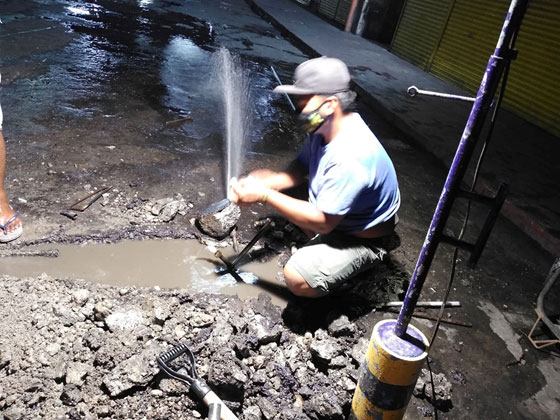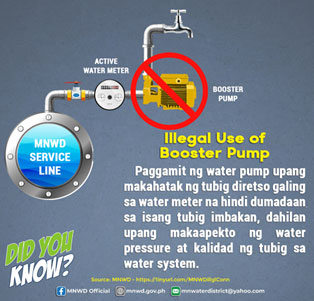MNWD Tips to Boost Water Pressure
One of the most common problems that consumers are experiencing is the low water pressure in their homes. This is usually caused by the high demand for water, especially in this time of pandemic when most people are staying at home for school and work. In addition, is the need for regular household sanitation and extreme heat due to global warming.
Water pressure is the force that is exerted on water to push it through pipes. The Metropolitan Naga Water District (MNWD) utilizes pressure with the use of pumps and motors in the respective pumping stations within the area it covers. Such pressure is affected by topography, the number of consumers, and their location. If you are one of those who are currently experiencing this predicament, then here are ways to help improve water pressure in your home.
The first thing that is needed is to check for leaks. Reduced pressure may be a result of leakage, equipment failures, or clogged pipelines. Contact a private plumber for in-house repairs or the MNWD hotline for damages located before the water meter.
Another solution is through the use of an elevated water storage tank. These are used for storing water for later use and whenever needed. It holds clean water until a demand for it is initiated within the household or establishment. Whichever type, having water storage tank at home provides you with instantaneous access to clean water with ease.
Lastly, a way to increase water pressure is with the use of a booster pump when installed in a proper manner. Boosters work by pulling water from a storage tank to add pressure (it increases water pressure throughout an entire house). However, booster pumps are prohibited and considered illegal if directly connected after the water meter, as they may affect neighboring households and would cause damage to the water system. Such prohibition is stated under Section 27 (0) of R.A. 9275, otherwise known as the “Philippine Clean Water Act of 2004”, Section 13 (e) of Presidential Decree No. 856 or the “Code of Sanitation in the Philippines”, and R.A. 8041 or the “National Water Crisis Act of 1995”.
High water demand is inevitable, but these alternatives are guaranteed to help in improving water pressure. However, the proper installation and usage must be taken into consideration to avoid any damage to our existing waterlines. If you’re in doubt as to the proper installation of such mechanisms, feel free to drop by our office for further assistance. (YMMSavilla)
MNWD personnel responding to a leakage report made through COMCEN to ensure timely course of action to avoid major concern in the water supply network and pressure management.
Per standard regulation, use of booster pump is an allowed practice when properly installed, otherwise it is a violation under Philippine Clean Water Act of 2004, Code of Sanitation in the Philippines, and the National Water Crisis Act.


